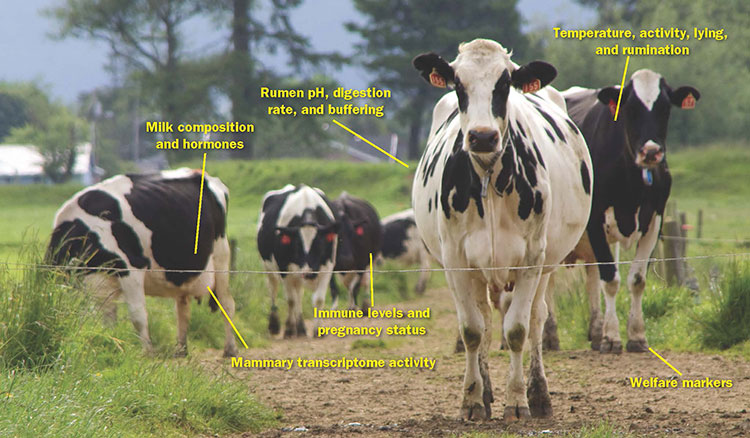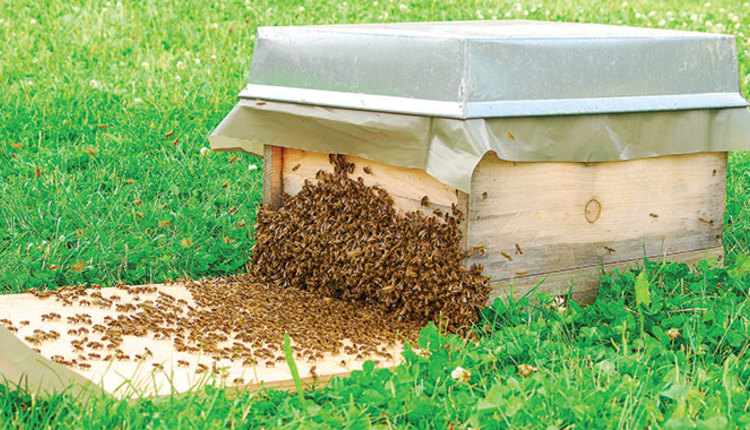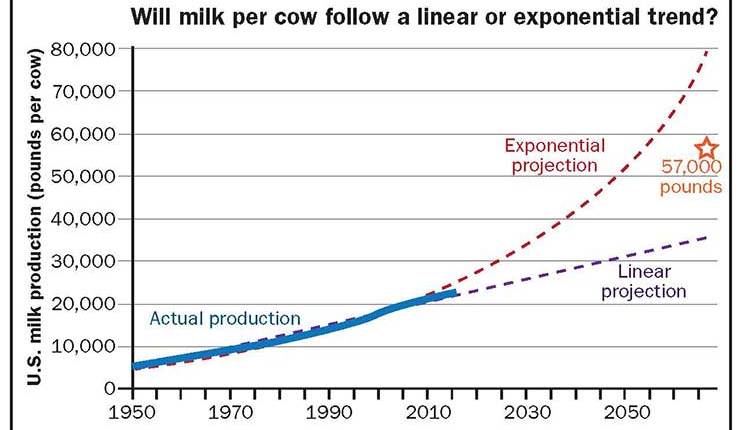
Individual animal identification will be DNA-based. Each cow will have multiple microscopic-sized sensors that monitor rumen function, metabolism, disease and immune status, and well-being. Other attributes will include how genes in the udder and liver of cows are changing to influence health and performance. Data from cow sensors will be integrated with data from silos, soils, feed crops, water systems, barns, milking centers, pastures, and personnel.
Robots and automated systems will do much of the routine work on farms 50 years from now. This will benefit cows because they crave consistency and uniformity. Driverless equipment will handle feeding and waste, robots will move groups of cows, and sorting will be completely automated. Heifers will be trained robotically before calving to ease their transition into the milking herd.
Dairy farms will recover phosphorus and other nutrients from waste streams to use as fertilizers and will generate renewable energy from the residues. Water will be rate-limiting, and most water will be recycled for multiple uses before ultimately being diverted to gray-water irrigation systems.
Epigenetics moves to the forefront
A major shift will occur in how we manipulate and manage gene expression. Today, our industry relies mostly on heritability of traits like yield, milkfat percentage, longevity, and udder health. In 2066, we will put much greater emphasis on manipulating expression of genes through changing or controlling an animal’s or herd’s environment. This is known broadly as epigenetic management or “environmental manipulation of gene expression.”
Epigenetic expression involves genes actually being “turned on” or “turned off” to cause changes in the animal’s biology. Typically, the gene may be “silenced” so that its effect is not manifest. In some cases this is detrimental, and in some cases it’s beneficial. Scientists are now learning how to capitalize on the beneficial impacts of epigenetic manipulation. This opens a whole new opportunity for managing genes that control biological processes.
We are already adopting epigenetics. For example, feeding higher quantities of milk solids to heifer calves before weaning is recognized to boost milk yield in first lactation. This is an environmental effect that is manifest nearly two years after the higher levels of feeding occur. We don’t yet know exact mechanisms whereby this effect occurs, but it has to do with altering how genes are expressed in the developing mammary gland or the animal’s metabolic system long before lactation begins.
As knowledge of epigenetic mechanisms grows, more epigenetic practices will be incorporated into day-to-day decisions to improve milk yield and composition, animal health, fertility, and other traits. For example, pregnant cows may be fed specific nutrients or active biological compounds during defined days of gestation to boost the long-term health of the fetus. Patterns of feeding growing heifers will be modified to enhance future mammary development and fertility. Milking frequency will be adjusted throughout lactation to optimize milk synthesis; cows will be fed seasonal supplements to strengthen hoof development.
One recent study in basic biology demonstrated that feeding different diets to male fruit flies altered proteins associated with DNA in their sperm. This alteration in sperm protein resulted in the genes of offspring being expressed differently, causing different growth and metabolic profiles. It makes one wonder if our industry should be looking at how feeding bulls in A.I. centers might affect their daughters.
Exploiting beneficial microbiomesThis will extend to plants and in the dairy barn itself, to soil, roots, stems, and leaves of plants.
We already know that profiles of organisms differ between healthy mammary quarters and quarters with mastitis and between healthy uteri and uteri infected with metritis. Yet our tendency is to treat mastitis and metritis with antibiotics that kill beneficial and detrimental organisms alike. Can we instead repopulate a diseased quarter or uterus with a healthy population of beneficial organisms? As we learn more, that is exactly what we will do.
Crop scientists have already discovered that coating seeds with cultures of beneficial organisms boosts yields by 5 percent or more without any additional inputs. In the future, it is likely that cultures of organisms will be added to our stalls, water supply, waste storage systems, commodity feeds, and barnyards. Inoculants are already added to our forages, but that is just the tip of the iceberg of what is possible.
Dairy farming in 2066
Last issue: Dairy farms and cows
This issue: Dairy farm technology
Next issue: Herds as superorganisms










